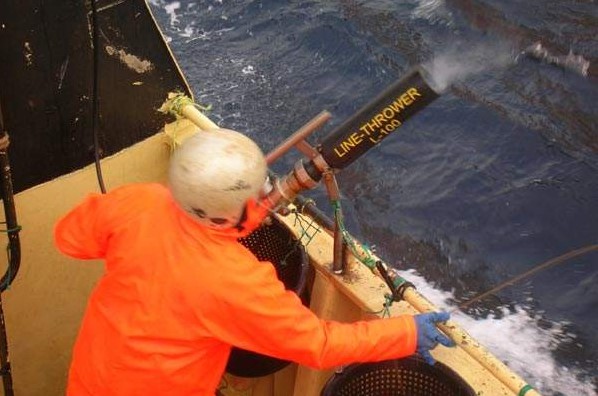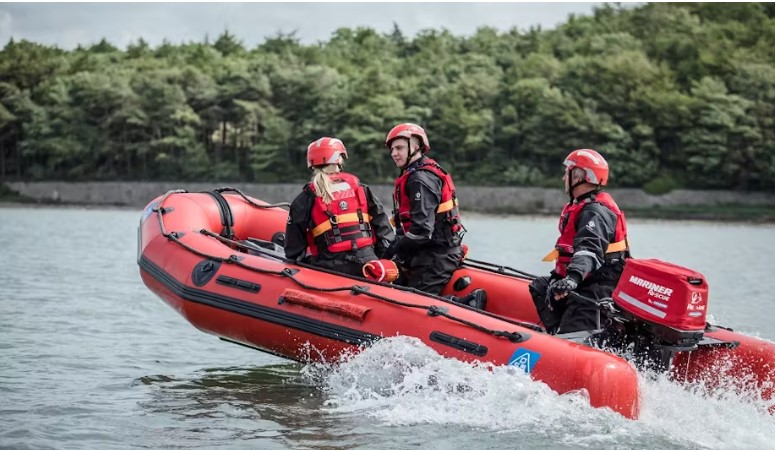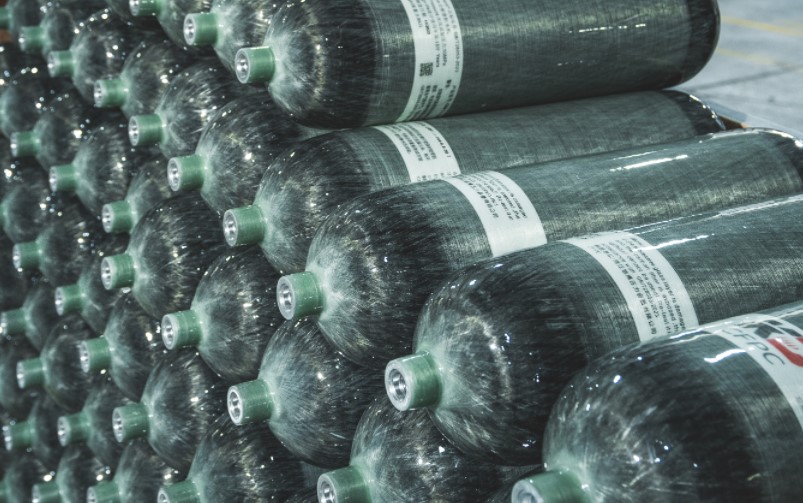Introduction
In lifesaving operations such as sea rescues or firefighting missions, speed, efficiency, and safety are critical. One essential tool used in such scenarios is the line thrower—a device designed to project a rope or line across long distances to reach victims in hard-to-access locations. Traditional propulsion methods used bulky or heavy components, limiting their ease of use. However, carbon fiber composite cylinders have changed this landscape. These cylinders are now widely adopted in line throwers and other lifesaving tools because of their lightweight, high-pressure capabilities, and durability.
This article explores how carbon fiber cylinders work in line throwers, their practical advantages, and why they are a reliable choice in emergency response applications.
What Is a Line Thrower and How Does It Work?
A line thrower is a rescue tool designed to launch a rope or messenger line to a distant target. It is commonly used in:
- Maritime Rescues – for connecting ropes between ships or from a ship to shore.
- Flood Relief – for sending lines across rivers or flooded areas.
- Fire and Emergency Situations – to access upper levels or bridge gaps in high-rise or industrial environments.
There are different types of line throwers: pyrotechnic (explosive-based), pneumatic (air-powered), or gas-propelled. Carbon fiber cylinders are used in pneumatic and gas-propelled systems to store high-pressure air or gas that powers the launch.
The Role of Carbon Fiber Cylinders
Carbon fiber composite cylinders are pressure vessels made by wrapping strong carbon fibers around an inner liner—often made of aluminum or plastic. These fibers are bonded with resin to create a lightweight but very strong container.
In line throwers, these cylinders serve as the propulsion source:
- High-Pressure Storage – The cylinder holds compressed air or inert gas (such as nitrogen or CO2) at high pressures (often up to 300 bar or more).
- Activation – When the user triggers the line thrower, the pressurized gas is rapidly released.
- Launch – This release of gas generates force to propel the line projectile or canister toward the intended target.
Why Carbon Fiber Cylinders Are a Better Fit
1. Lightweight Design
Carbon fiber cylinders are significantly lighter than traditional steel tanks. This is especially important in emergency tools that need to be handheld or carried over long distances. In rough conditions—such as on deck during a storm or in flooded areas—reduced weight means easier, faster handling.
2. High Strength and Pressure Tolerance
Carbon fiber composites are known for their high strength-to-weight ratio. These cylinders can handle high internal pressures without being heavy or fragile. This makes them reliable in sudden activation and repeated use.
3. Compact and Portable
Because they can store high-pressure gas in a smaller form, carbon fiber tanks allow manufacturers to design more compact line thrower devices. This makes them easier to store in vehicles, boats, or rescue kits without sacrificing performance.
4. Corrosion Resistance
Unlike steel tanks, carbon fiber cylinders are corrosion-resistant. This is especially useful in marine environments, where saltwater exposure can degrade traditional materials over time.
Applications Beyond Line Throwers
Carbon fiber composite cylinders are also found in:
- Self-Contained Breathing Apparatus (SCBA) – Used by firefighters or rescue divers.
- Rescue Buoy Inflators – For inflating lifebuoys or floatation devices.
- Portable Rescue Kits – Lightweight kits designed for on-the-go responders.
In each case, the performance and portability provided by carbon fiber cylinders improve the efficiency and response time of rescue missions.
Safety Considerations and Maintenance
Although carbon fiber cylinders are safe and robust, proper handling and maintenance are still important:
- Regular Inspection – Visual checks and periodic pressure tests are needed to ensure cylinder integrity.
- Proper Refilling Equipment – Use approved systems that match the required pressure levels.
- Avoid Physical Damage – Avoid drops or impacts, as surface damage can affect safety even if the structure seems intact.
- Labeling and Certification – Ensure the cylinder meets relevant safety standards and is properly labeled.
Challenges to Adoption
- Higher Upfront Cost – Carbon fiber cylinders are more expensive initially than traditional options.
- Training Requirements – Users may need to learn new refilling and handling techniques.
However, the long-term benefits in safety, weight reduction, and operational reliability often make up for these drawbacks.
Future Developments
As composite material technology continues to advance, carbon fiber cylinders will likely become even more efficient and affordable. Innovations may include:
- Smarter Monitoring Systems – Embedded pressure sensors and digital readouts.
- Even Lighter Materials – Hybrid composites combining carbon fiber with other lightweight materials.
- Modular Rescue Tools – Tools with interchangeable cylinder systems for different missions.
Conclusion
Carbon fiber composite cylinders play a critical role in modern line throwers and lifesaving equipment. Their ability to deliver high-pressure performance in a lightweight, corrosion-resistant form makes them ideal for rescue missions where every second counts. Though they come with a higher initial cost and require some training, their advantages in safety, durability, and mobility make them a practical and necessary component in today’s emergency response tools. As rescue technology continues to evolve, carbon fiber cylinders are likely to remain at the core of efficient and dependable lifesaving systems.
Post time: Apr-08-2025



